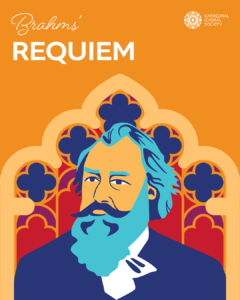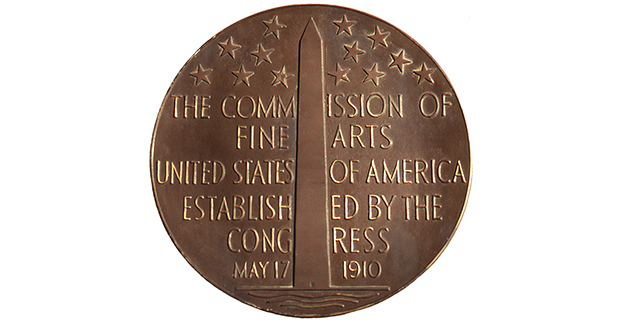Before The Downbeat: Brahms’ Requiem October 4, 2024
Before The Downbeat is a study guide by and for the Cathedral Choral Society in preparation for its concerts. Previously distributed in print form to singers only, we are thrilled to present this content to all our audiences in digital form.
–
 Ein deutches Requiem is a watershed not only in Johannes Brahms’s development as a composer but also in the evolution of the Requiem as a musical form from its strictly Roman Catholic liturgical function to a musical vehicle by which to explore, through non-liturgical and even non-Biblical texts, the meaning of death, mourning and consolation.
Ein deutches Requiem is a watershed not only in Johannes Brahms’s development as a composer but also in the evolution of the Requiem as a musical form from its strictly Roman Catholic liturgical function to a musical vehicle by which to explore, through non-liturgical and even non-Biblical texts, the meaning of death, mourning and consolation.
First Washington Performances
At the turn of the twentieth century, choral music in the nation’s capital was presented primarily by church choirs. On March 16, 1905, the choir of the now-deconsecrated Trinity Episcopal church (First and C Streets, NW) gave the first known Washington performance of Brahms’s Ein deutsches Requiem, in English, under the direction of Oscar Franklin Comstock but with organ only. Five years later, The Choral Society of Washington, D.C. gave the next known complete performance in 1910.
The Washington Choral Society, a precursor to the Cathedral Choral Society, gave the first complete performance with orchestra led by its founding director Louis Potter, again in English, on January 28, 1937, in this Cathedral to mark the first anniversary of the death of England’s King George V.
The Requiem, according to the Evening Star, drew “an audience beyond the capacity of the cathedral. Many left, not being able to find even standing room.” (At that time, the Cathedral’s grand space consisted only of the Great Choir, the chapels of St. John and St. Mary, the Crossing and the North Transept.) It was, the reviewer wrote, “an ambitious undertaking, but the chorus of nearly 100 voices accompanied by the organ, played by Robert G. Barrow [the Cathedral’s second organist and choirmaster], a good size orchestra [members of the nascent National Symphony Orchestra], acquitted itself in praiseworthy manner.”
The Cathedral Choral Society’s first performance took place in Constitution Hall on October 29, 1952, as part of the National Symphony Orchestra’s 20th Annual Founders Day Concert, marking the NSO’s third decade on the Washington musical scene. The Evening Star reviewed “a magnificent performance,” adding, “To Paul Callaway, director of the [Washington and Cathedral Choral] Societies, goes the highest praise for his accomplishment, and the ovation accorded him, when he was brought out to share the acclaim with the soloists and [NSO conductor] Dr. [Howard] Mitchell, was the audience’s encomium.”
“The voices of the singers are beautiful in ensemble, matched in purity of tone, in expressiveness and in security of pitch. The group produces pianissimos of unusual loveliness and reaches climaxes with rich tonal volume. Throughout, the nuances were superbly fashioned and the clarity of enunciation was a pleasure to hear . . . . Such singing as the Choral Societies did last night alone would have made the concert memorable.”
Dr. Callaway conducted the work again in 1959, 1980, and for the Society’s 25th season program that included the Washington premiere of Leonard Bernstein’s newly minted Chichester Psalms. In 1985, Richard Wayne Dirksen, Callaway’s successor, concluded his season as the Society’s interim music director with Ein deutsches Requiem. Dr. J. Reilly Lewis conducted three performances, most recently in 2013.
On October 20, 2024, Music Director Steven Fox is leading his first reading with the Cathedral Choral Society.
 Guy’s Requiem
Guy’s Requiem
Guy’s Requiem is the true story of Guy Nicolson (1895-1964), a decorated British veteran of World War I and Rhodes Scholar, who later became famed headmaster of Ridge School in Johannesburg. When World War II broke out, despite his age, he joined the staff of the South African 2nd Division as a captain. On June 21, 1942, Nicolson was captured in the disastrous fall of Tobruk during the North African Desert Campaign. He was held prisoner in Offizierlager XIIB, a German POW camp for British officers at Hadamar.
 Nicolson used the intellectual and physical skills honed as a Rhodes Scholar to keep up the spirits of his fellow prisoners. Despite oppressive captivity and perilous escape attempts, he also set out to fulfill his lifelong dream to lead a symphony orchestra of prisoner-musicians in a full performance of Brahms’s Ein deutsches Requiem.
Nicolson used the intellectual and physical skills honed as a Rhodes Scholar to keep up the spirits of his fellow prisoners. Despite oppressive captivity and perilous escape attempts, he also set out to fulfill his lifelong dream to lead a symphony orchestra of prisoner-musicians in a full performance of Brahms’s Ein deutsches Requiem.
The Nazis exploited the orchestra for propaganda purposes, giving them equipment, music, and rehearsal facilities, as seen above. On March 8, 1945, Nicolson led the prisoners in a performance of the first, second, fourth, and fifth movements of the Brahms Requiem. The day before, U.S. forces secured the crucial Ludendorff Bridge over the Rhine near Remagen.
–
(c) 2024 Margaret Shannon
Reprinted with permissions from
Prelude, Vol. XXII, No. 1 (Fall 2024)


